Menu
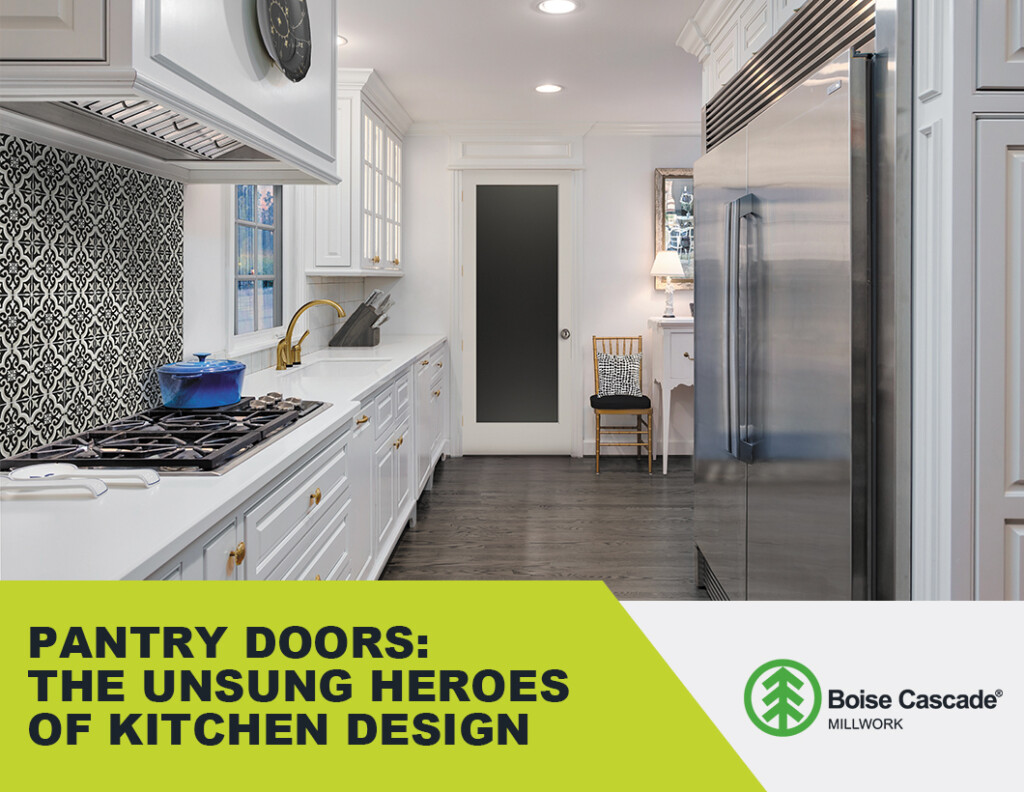

The kitchen, often considered the heart of the home, is a space where functionality meets aesthetic appeal. While countertops, cabinetry, and appliances often steal the spotlight, there’s an unsung hero that plays a crucial role in the overall design narrative: the pantry door. More than a barrier concealing dry goods, a pantry door can complement your kitchen’s style, become a focal point, and add practical value. The right choice blends function with visual appeal, tying the space together.
For homeowners envisioning a cohesive and beautifully appointed kitchen, and for professional installers tasked with bringing these visions to life, understanding the interplay between pantry door design and kitchen style is paramount. The right choice in material, style, and, crucially, a flawless installation, can ensure seamless integration and long-lasting durability. This article will guide you through matching custom pantry doors to various popular kitchen design styles, delving into the specific considerations for professional installers, including material selection, hardware specifications, and installation best practices.
Choosing the perfect custom pantry door begins with a deep understanding of your kitchen’s overarching design theme. Each style carries distinct characteristics that should inform your pantry door selection, ensuring a harmonious and polished look.
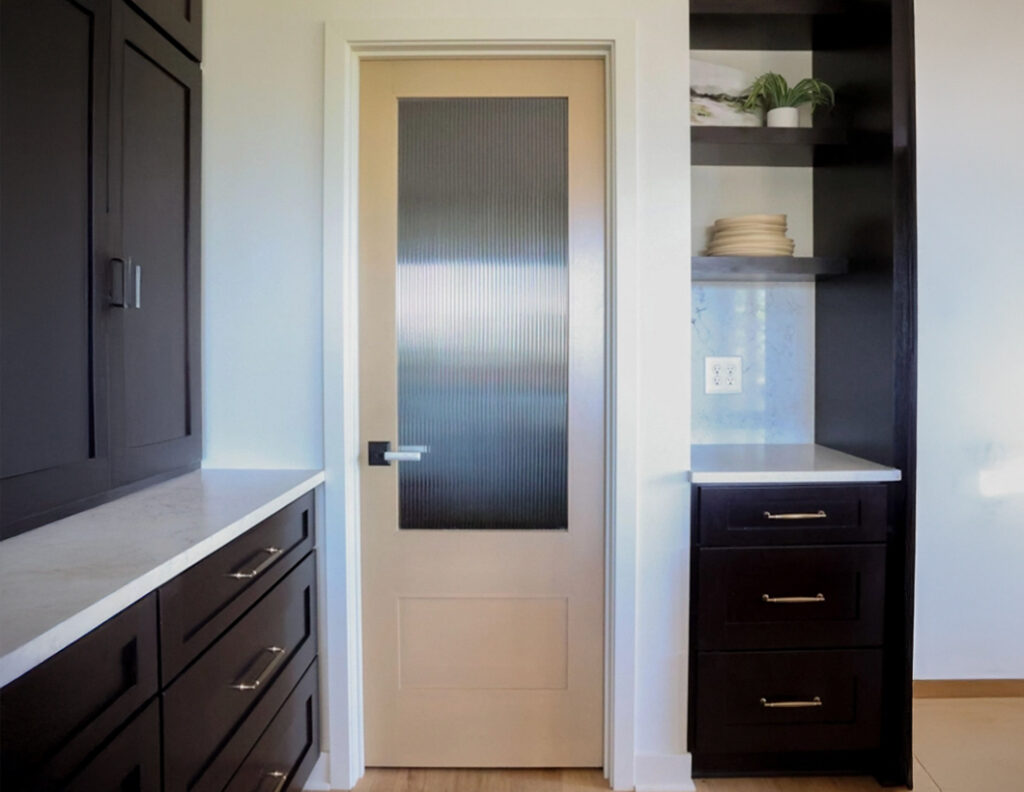
Modern and contemporary kitchens are defined by clean lines, a minimalist approach, and a focus on sleek functionality. They often feature handleless designs, smooth surfaces, and a sense of understated elegance.
For such kitchens, recommended pantry door styles emphasize simplicity and integration:
Materials and finishes for modern pantry doors often include high-gloss or matte lacquer, thermofoil, and minimalist wood veneers, all contributing to a sleek, refined look. Hardware choices lean towards invisible hinges, slim edge pulls, and push-latch mechanisms to preserve the clean aesthetic.
Traditional and classic kitchens exude timeless charm, characterized by rich details, ornate moldings, warm wood tones, and often a symmetrical layout that evokes a sense of history and heritage.
Pantry door styles that complement these kitchens include:
Common materials and finishes for traditional pantry doors include cherry, maple, oak, and painted finishes in cream, white, or muted colors. Distressed finishes can also add an aged character. Hardware typically features ornate knobs, cup pulls, classic strap hinges, and ball catches, completing the authentic look.
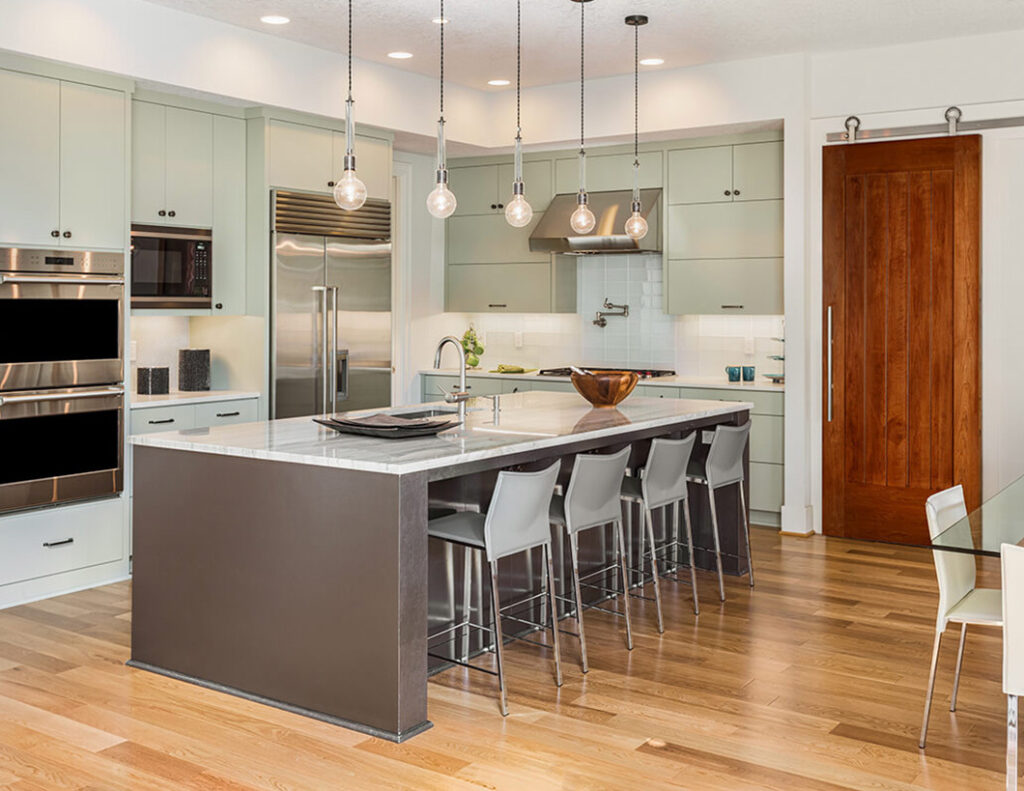
Farmhouse and rustic kitchens are known for their warm, inviting atmosphere, often showcasing natural materials, distressed finishes, and practical, sometimes repurposed, elements.
For these kitchens, pantry door options bring character and function:
Materials and finishes frequently seen in farmhouse and rustic designs include reclaimed wood, distressed pine, painted shiplap, and exposed natural wood. Hardware is often heavy-duty sliding barn door hardware with exposed rollers and flat tracks, complemented by cast iron pulls and rustic latches.
Transitional and eclectic kitchens blend traditional and modern elements, offering flexibility for personalized expression and a focus on balanced design. Pantry doors in these spaces often serve as creative focal points, combining diverse materials, textures, and finishes.
Pantry doors in these settings can be particularly creative:
Materials & Finishes: Painted wood, mixed materials such as wood and metal, bold colors, and varied textures.
Hardware: A wide range from brushed brass pulls and matte black knobs to industrial-style handles, allowing for tailored choices that complement the eclectic mix.
Regardless of the chosen aesthetic, the success of any custom pantry door installation hinges on meticulous planning and execution by a professional.
Accurate measurements are the foundation of a successful installation. This includes precise rough opening measurements and careful consideration of swing clearance for hinged doors (inward/outward, left/right). For heavier installations like barn doors, wall reinforcement is crucial, especially in high-traffic areas or homes with active families.
Installers must also map out potential electrical wiring or plumbing behind walls to avoid accidental damage during the process.
Understanding the properties of various materials—such as different wood species, MDF, composites, and glass—is vital. Installers should advise clients on moisture resistance, particularly in a kitchen environment, and discuss long-term durability expectations to ensure the chosen material can withstand daily wear and tear.
The right hardware is essential for both function and aesthetics. This involves matching the appropriate hinge type (butt, European, pivot) to the door’s weight and intended function. Latch and catch mechanisms (roller, ball, magnetic) must be selected for reliable closure. Proper screw lengths and types are critical for secure fastening in various materials, and handles and pulls must be chosen for their ergonomic and aesthetic fit within the kitchen’s design.
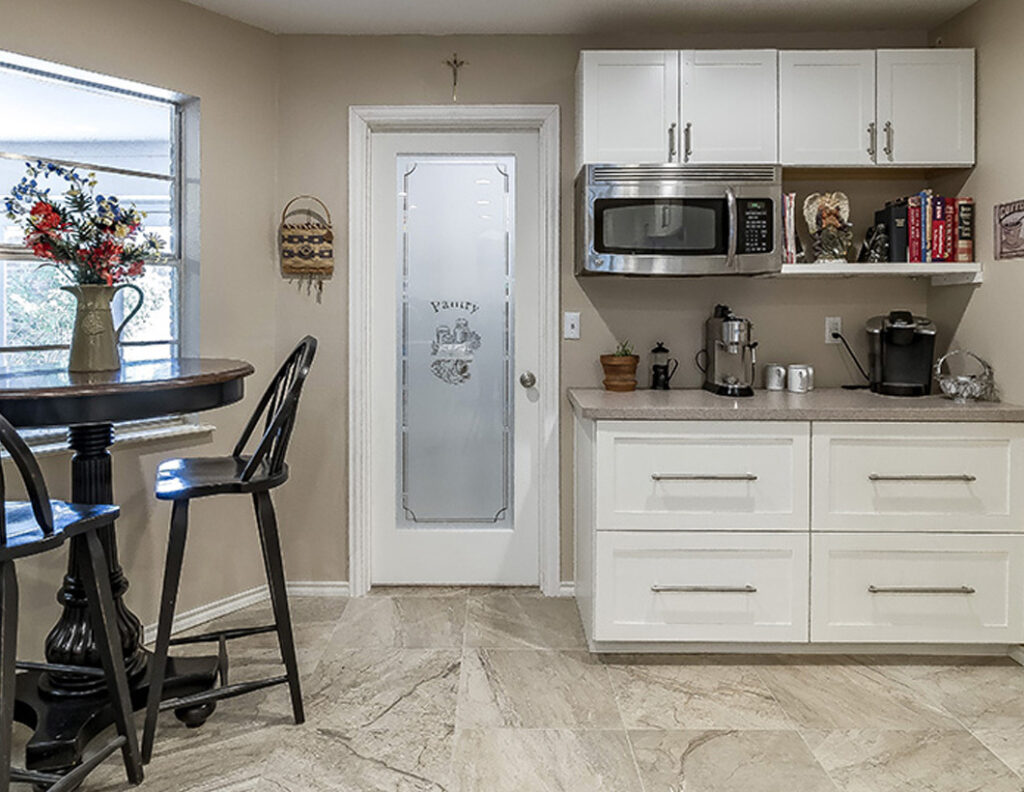
Each door type demands specific installation expertise:
The final steps ensure a polished result and client satisfaction. This includes making any necessary adjustments for perfect alignment and smooth operation, performing meticulous caulking and trim work for a clean, professional finish, and educating the client on proper care and maintenance of their new custom pantry doors. Addressing any post-installation concerns promptly solidifies client trust and satisfaction.
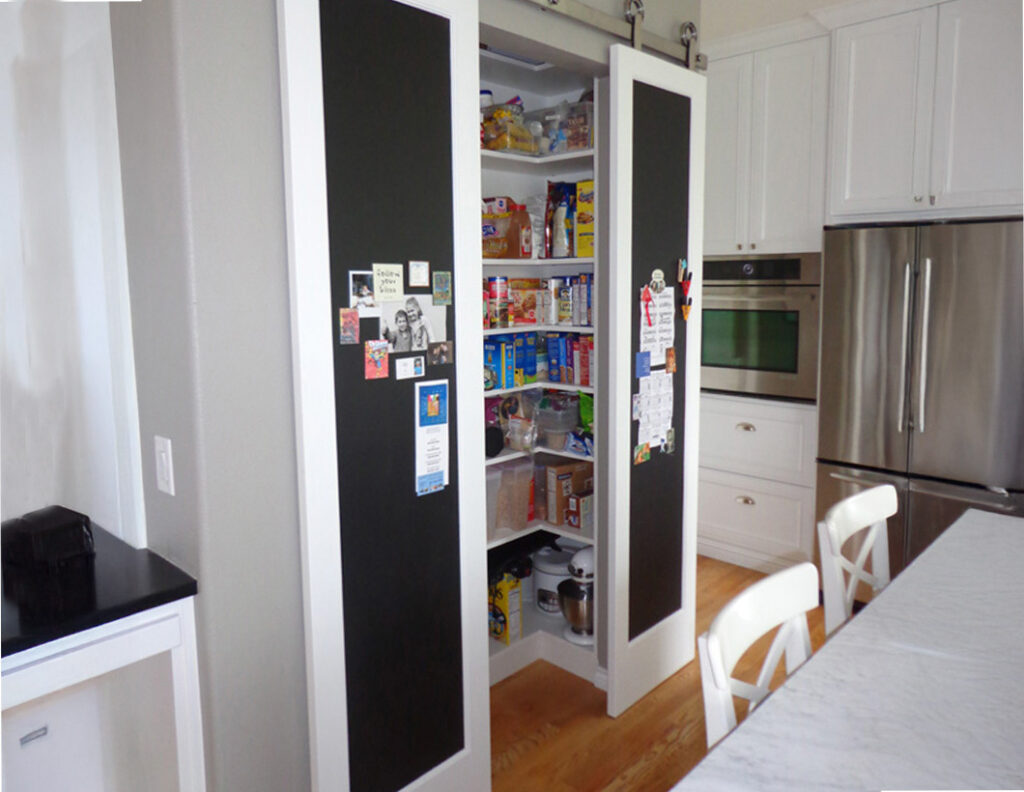
A thoughtfully selected and expertly installed custom pantry door has the power to elevate a kitchen from simply functional to truly exceptional.
It’s a testament to how even seemingly minor details contribute significantly to a home’s overall design narrative. The journey to selecting and installing the perfect pantry door is a collaborative one, requiring clear communication between designer, client, and the skilled installer. Exploring options like interior doors can help spark ideas and ensure the choice fits seamlessly within the space. Ultimately, a well-chosen custom pantry door leaves a lasting impression, showcasing not just a beautiful design, but also the quality craftsmanship and attention to detail that elevate a house into a truly curated home.
Start by identifying your kitchen’s dominant design elements. Are your cabinets sleek and handleless (modern)? Do you have rich wood tones and ornate details (traditional)? Or exposed beams and distressed finishes (farmhouse)? Once you’ve pinpointed your core style, you can explore pantry door options that share similar characteristics in terms of lines, materials, and hardware. Don’t hesitate to consult with a professional kitchen designer or installer for tailored advice.
Custom pantry doors generally involve a higher investment than off-the-shelf options due to personalized sizing, specific material choices, unique finishes, and specialized hardware. However, this allows for a perfect match to your kitchen’s aesthetic and precise functionality, often adding significant value and appeal that standard doors cannot.
For kitchens with higher humidity, consider materials known for their stability. Solid wood doors should be properly sealed and finished. MDF (Medium-Density Fiberboard) is a good option as it’s less prone to warping than solid wood, especially when painted. For glass inserts, ensure the frame material is resistant to moisture. Adequate ventilation in the pantry itself can also help manage humidity.
Yes, in many cases, a standard hinged pantry door opening can be converted into a sliding barn door. This typically involves removing the existing door and frame, reinforcing the wall above the opening to support the barn door track, and installing the new door and hardware. It’s an excellent way to save space and add a rustic or industrial design element, but professional installation is highly recommended due to the structural considerations.
Maintenance largely depends on the door’s material and finish. Generally, regular dusting and wiping with a damp cloth are sufficient. For wood doors, avoid harsh chemical cleaners that can strip finishes. Glass inserts can be cleaned with standard glass cleaner. For sliding doors, occasionally check and clean the track to ensure smooth operation. Promptly address any sticking or squeaking issues to prevent further wear.
